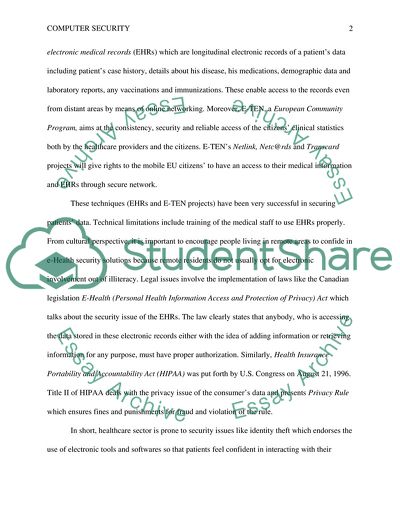Computer Security in the Health Industry Research Paper. https://studentshare.org/medical-science/1736879-computer-security-issues-in-the-health-industry
Computer Security in the Health Industry Research Paper. https://studentshare.org/medical-science/1736879-computer-security-issues-in-the-health-industry.


